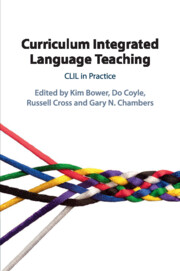Book contents
- Curriculum Integrated Language Teaching
- Curriculum Integrated Language Teaching
- Copyright page
- Contents
- Figures
- Tables
- Contributors
- Foreword
- Preface
- Acknowledgements
- Part I The Educational Context for CLIL
- 1 CLIL in Multilingual and English-Background Contexts
- 2 How Can Learners Be Motivated in a Context of Demotivation for Foreign Language Learning?
- 3 A Rationale for CLIL in Primary Schools
- Part II Current Aspects of Practice in CLIL
- Part III New Knowledge and Future Directions
- Afterword
- Index
- References
2 - How Can Learners Be Motivated in a Context of Demotivation for Foreign Language Learning?
from Part I - The Educational Context for CLIL
Published online by Cambridge University Press: 27 July 2020
- Curriculum Integrated Language Teaching
- Curriculum Integrated Language Teaching
- Copyright page
- Contents
- Figures
- Tables
- Contributors
- Foreword
- Preface
- Acknowledgements
- Part I The Educational Context for CLIL
- 1 CLIL in Multilingual and English-Background Contexts
- 2 How Can Learners Be Motivated in a Context of Demotivation for Foreign Language Learning?
- 3 A Rationale for CLIL in Primary Schools
- Part II Current Aspects of Practice in CLIL
- Part III New Knowledge and Future Directions
- Afterword
- Index
- References
Summary
Chapter 2 is divided into four sections. The first presents the theoretical development of motivation theory in language learning contexts, exploring the principles derived over recent decades that have informed where we are now in the context of CLIL. The second section explores models that have been developed to conceptualize motivation in language learning contexts. The third investigates how the final model, the process motivation model (PMM), initially developed specifically for CLIL contexts, can be used by teachers and researchers to identify and explore aspects of provision that are motivating for learning and teaching and for research. The PMM is a framework for supporting CLIL teaching practices informed by theories on L2 motivation. Bringing a motivational lens to classroom practice can enable a close, deep reflection on a specific aspect of learning. Finally, implications for future scholarship and practice are considered.
- Type
- Chapter
- Information
- Curriculum Integrated Language TeachingCLIL in Practice, pp. 22 - 42Publisher: Cambridge University PressPrint publication year: 2020
References
- 1
- Cited by



